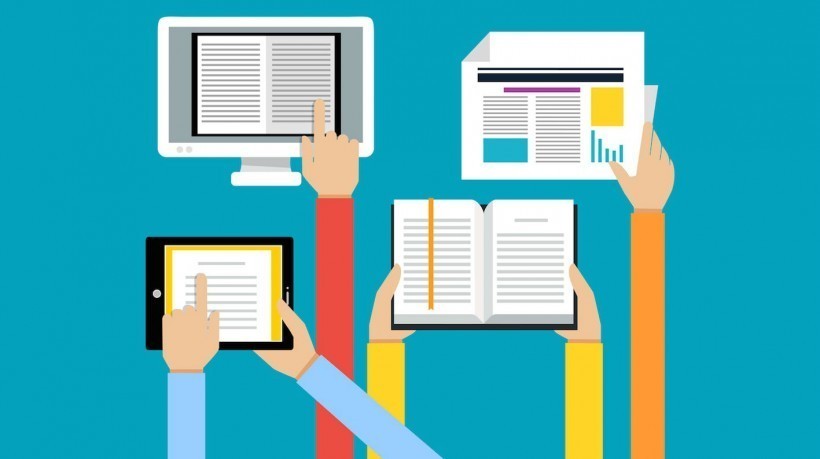Print Learning Against eLearning: Should You Make The Switch?
In just a few short years, technology has become so ingrained in our culture that going to school or performing a job without it seems absurd. Children growing up today (i.e. born after 2010) have been dubbed Generation Alpha, and they’re set to be the most tech-intensive, educated generation yet.
As such, eLearning has seen phenomenal growth in the last couple of years – yet, as mentioned above, there are still naysayers perpetuating a "digital divide" of sorts, especially in higher education. Maryville University’s online education program reports that:
- Merely 27 % of faculty surveyed believe that digital materials "have a beneficial impact on student learning compared to print".
- Only 35%t feel that "digital course materials provide for a richer and more effective learning experience than print".
- Just 44% of faculty agreed with the statement "students prefer digital course materials over print".
The findings also showed that "97% of faculty chose their course materials based on their personal perceptions over any other factor", and that "print consistently wins out over digital, even though 79% admit that digital materials are less costly for their students".
Is this digital divide justified? Is it possible that there is still merit in print learning over eLearning and other digital solutions to pedagogy?
The Case For Print Learning
Multiple studies have recently shown that print learning is more effective than learning associated with digital screens. When it comes to reading information that spans more than one screen, this can be attributed to the "disruptive effect" that scrolling has on reading comprehension. To better explore this phenomenon, Patricia A. Alexander and Lauren M. Singer conducted three studies that "explored college students' ability to comprehend information on paper and from screens". They reported key findings in an article with Business Insider:
- Students overwhelmingly preferred to read digitally.
- Reading was significantly faster online than in print.
- Students judged their comprehension as better online than in print.
- Paradoxically, overall comprehension was better for print versus digital reading.
- The medium didn't matter for general questions (like understanding the main idea of the text).
- But when it came to specific questions, comprehension was significantly better when participants read printed texts.
So what Alexander and Singer found was essentially that there’s no "one medium fits all" approach. Sometimes students are better off reading print when deeper comprehension is the primary goal, but it was also found that when a select group of college students moved from print to digital learning, they actually comprehended better because they slowed down. With these admissions, Alexander and Singer admit that they aren’t out to halt the digital march of technological learning, but their goal rather, as they state in their own words, "is simply to remind today's digital natives–and those who shape their educational experiences–that there are significant costs and consequences to discounting the printed word's value for learning and academic development".
eLearning, Digital Fluency, And Jobs Of The Future
When weighing eLearning against print learning, it’s important to take both sides of the argument into account. Not only has technology allowed us to work in different ways, but it’s allowed us to find work in different ways – in fact, digital literacy is tied almost directly into process by which everybody acquires work nowadays. As the experts at Florida Career College put it: "Nowadays, thanks to technology, you don't have to leave your house in order to search for a new job. All you need to land a new career is a digital device that has access to the internet".
Indeed, without access to the internet or the underpinnings of digital literacy, many wouldn’t be able to find a job, let alone keep one. This same digital literacy and fluency can be taught via eLearning practices, as eLearning contributor, Edgar Wilson, points out in "Using eLearning to Promote New Literacy", but even before new hires hit the corporate sphere, it’s important that they’ve had digital experiences tied to learning.
While it used to be considered detrimental to learning not to have all of your students and instructors in one room, nowadays, learning how to navigate remote learning could be instrumental in helping employees prepare for a world of technology tied to remote work.
"Remote work offers several benefits – for both the business and the environment", Marylhurst MBA alumni, Janet Friday, notes in an article with the university. "Because I am not commuting to an office…I have more time to devote to my work activities. I also find that I can be more focused and efficient in my work when I am working from home. Technology has made it easy to talk to my colleagues around the world, and share computer screens with the touch of a button".
The truth of the matter is that there are distinct benefits in using eLearning to prepare students for jobs of the future. However, we mustn’t be so quick to switch completely from paper to digital, lest we toss the baby out with the bathwater. There’s still room for paper in a world full of screens, we just have to determine how to use it most effectively.









